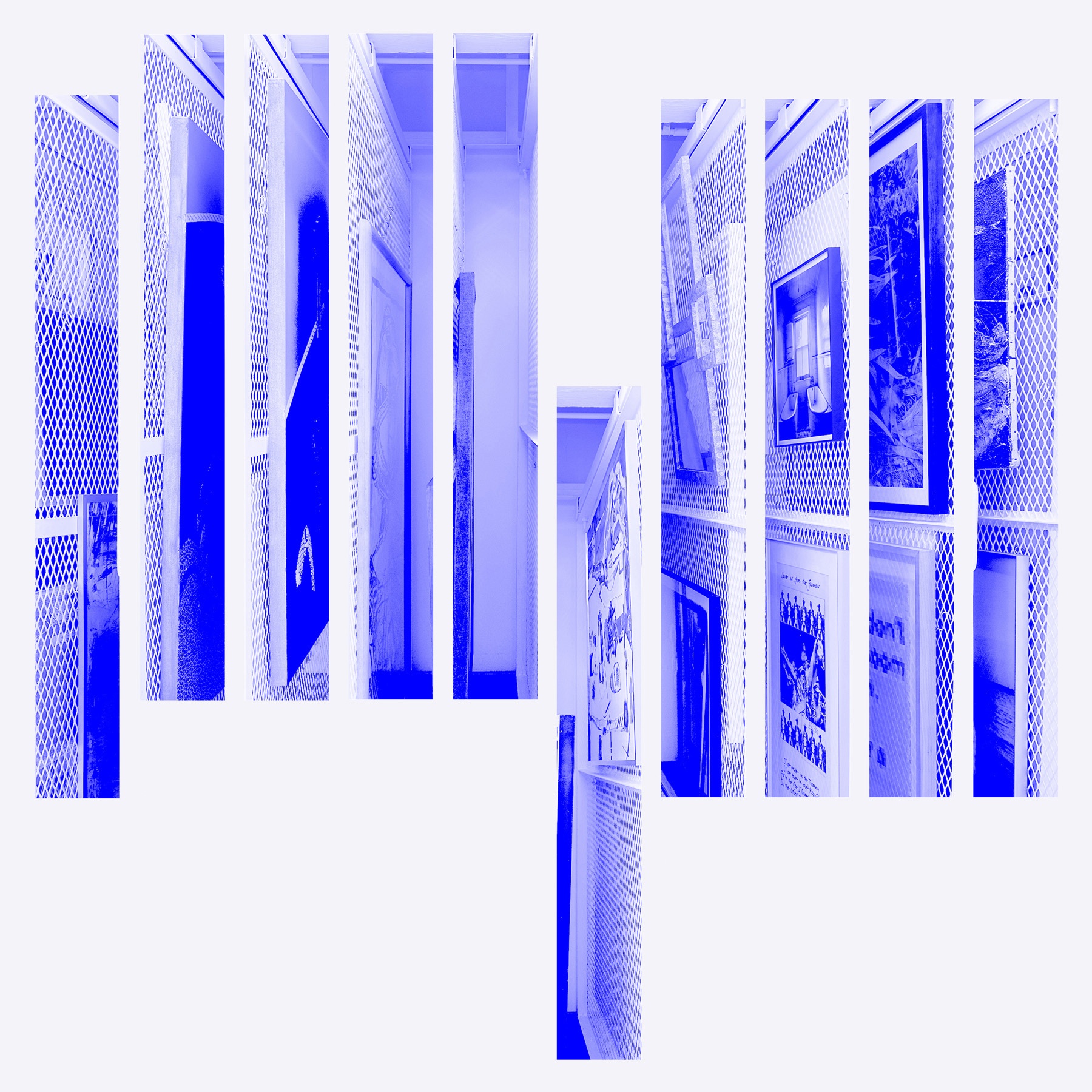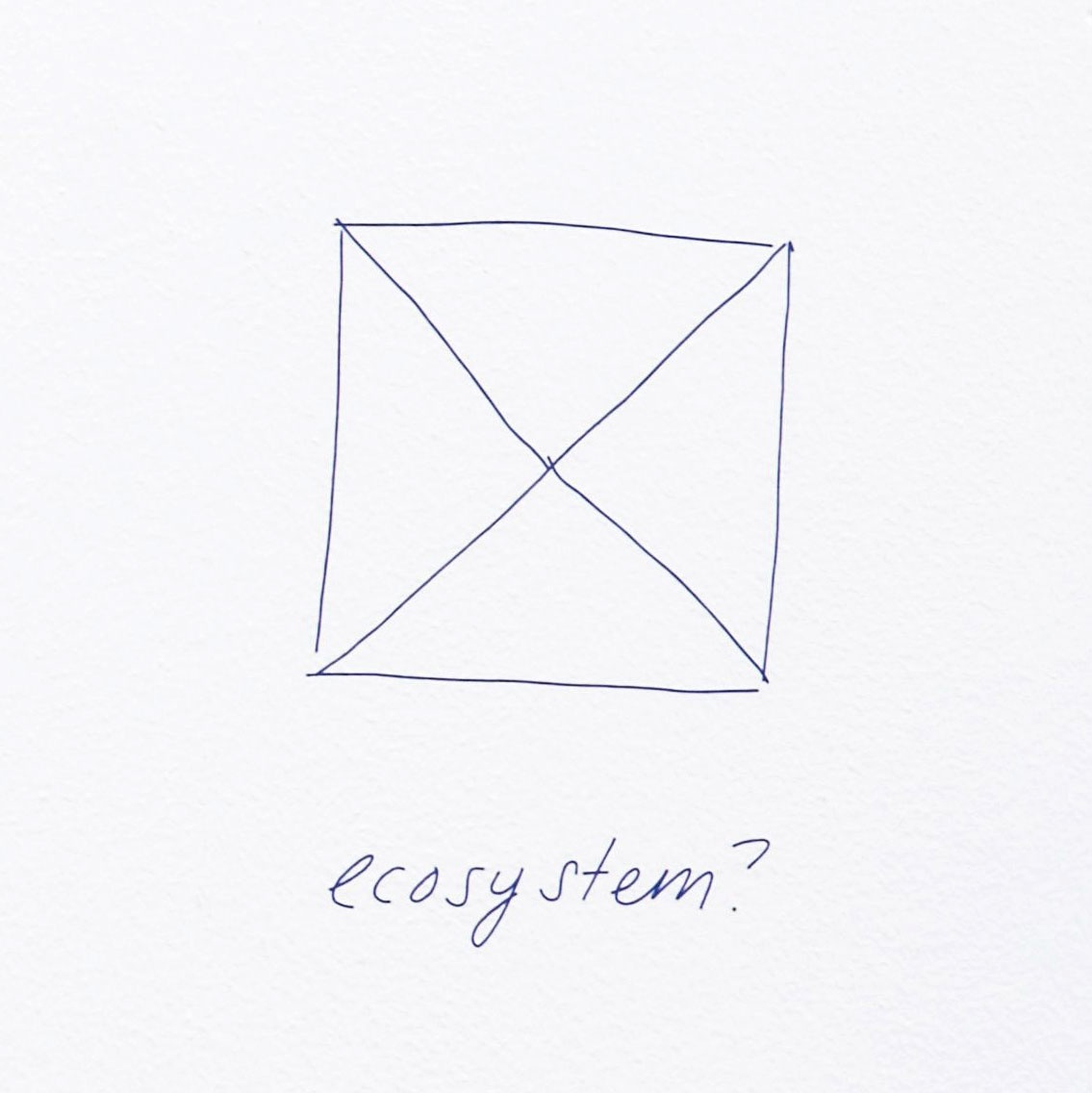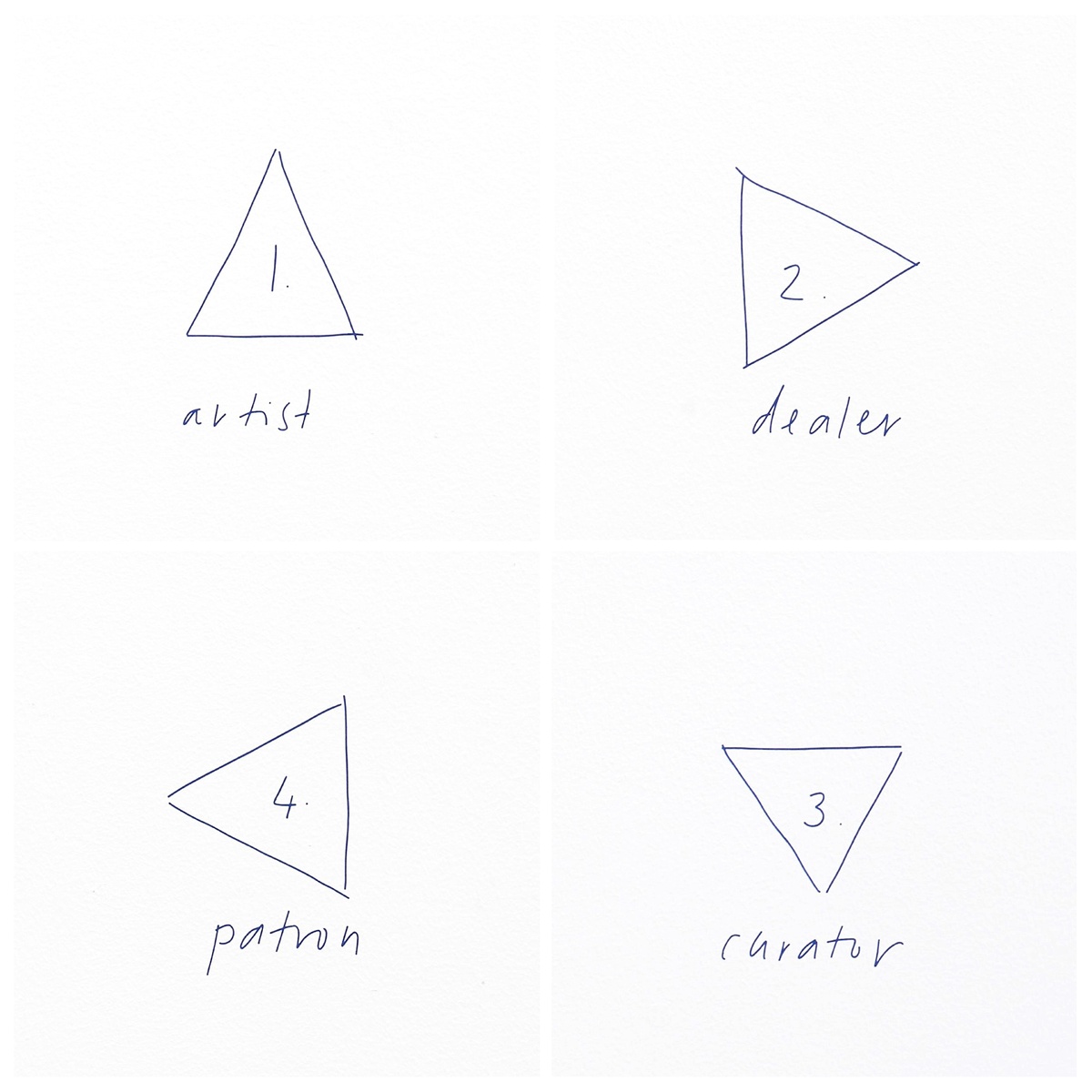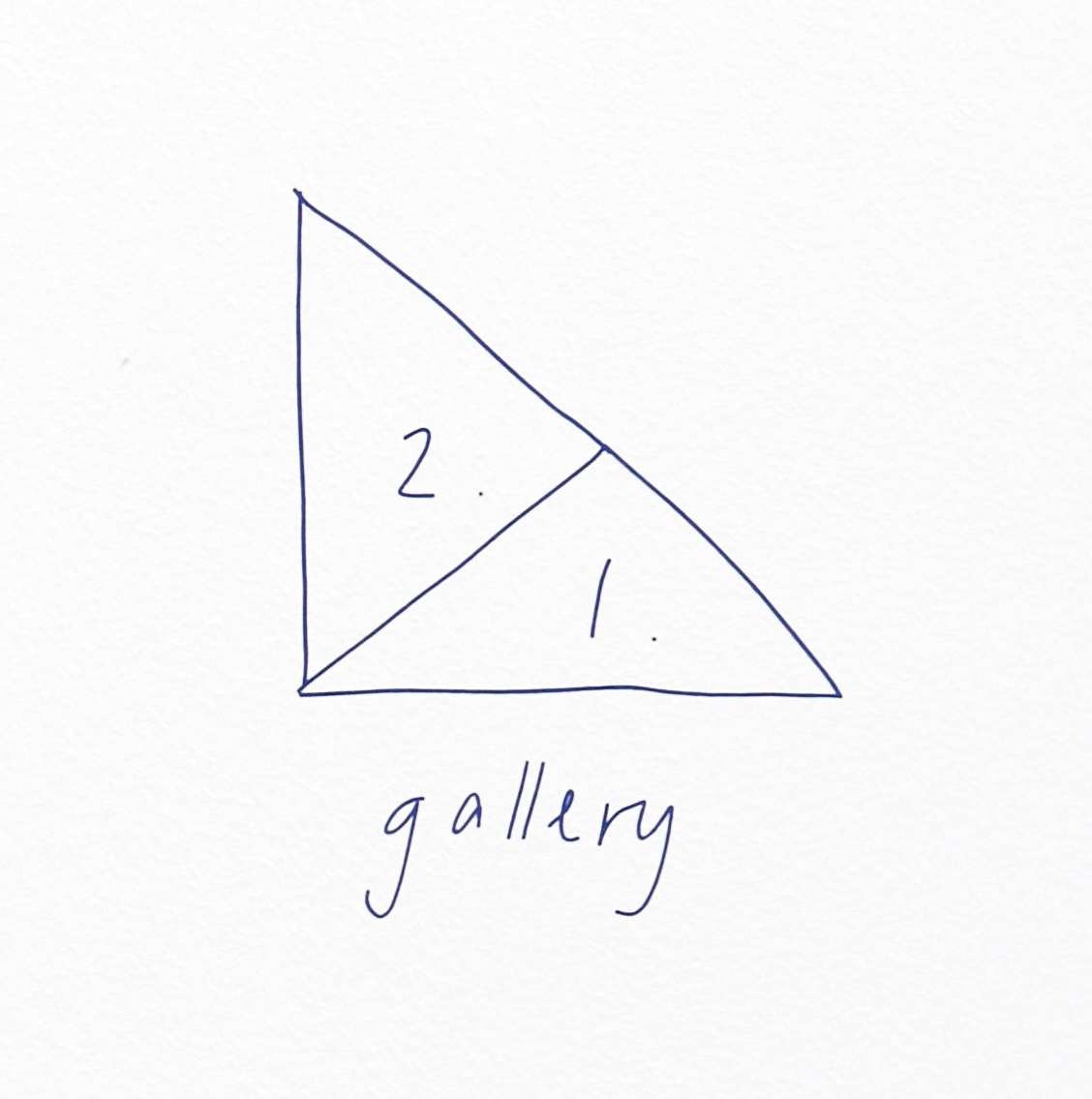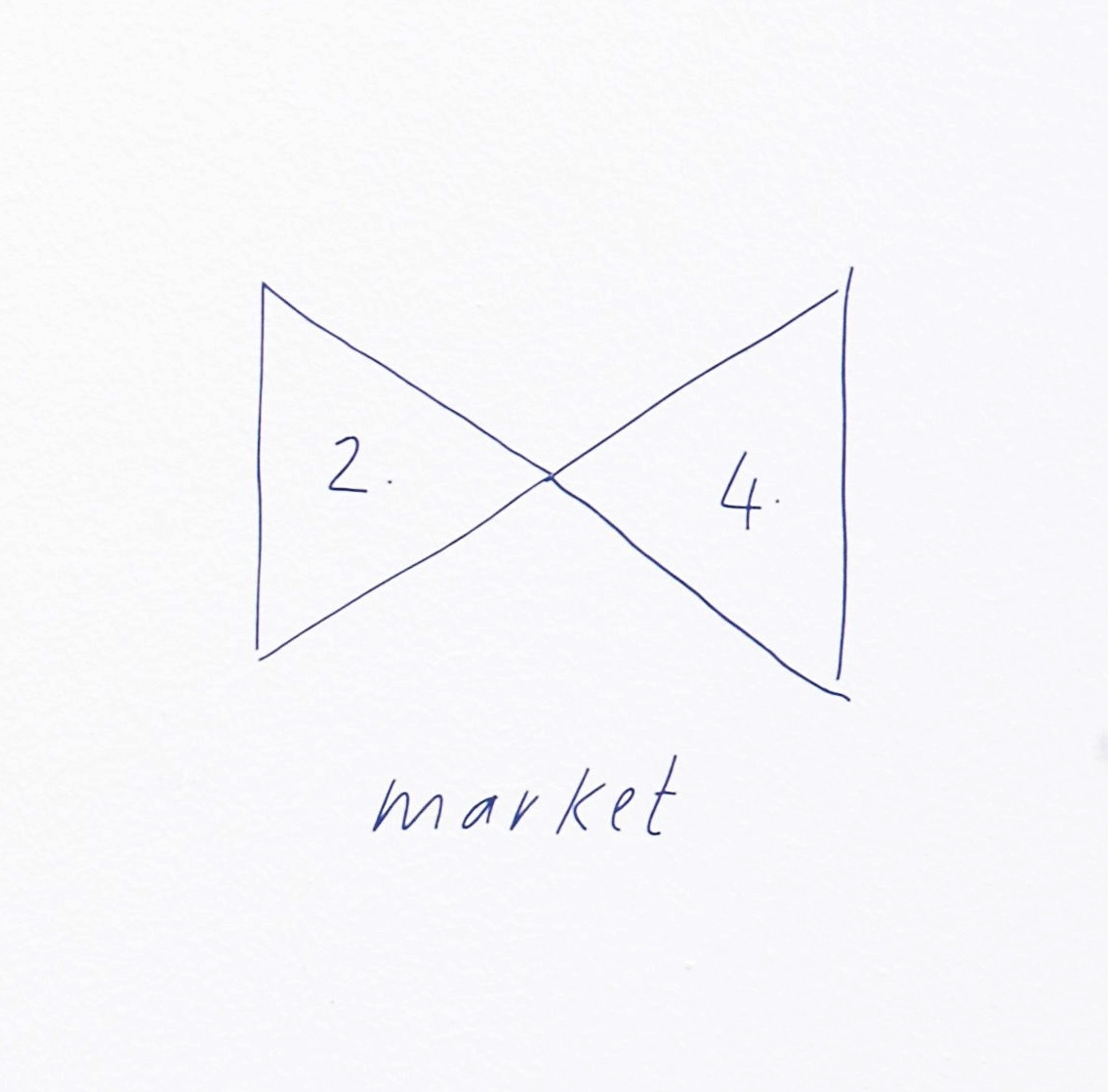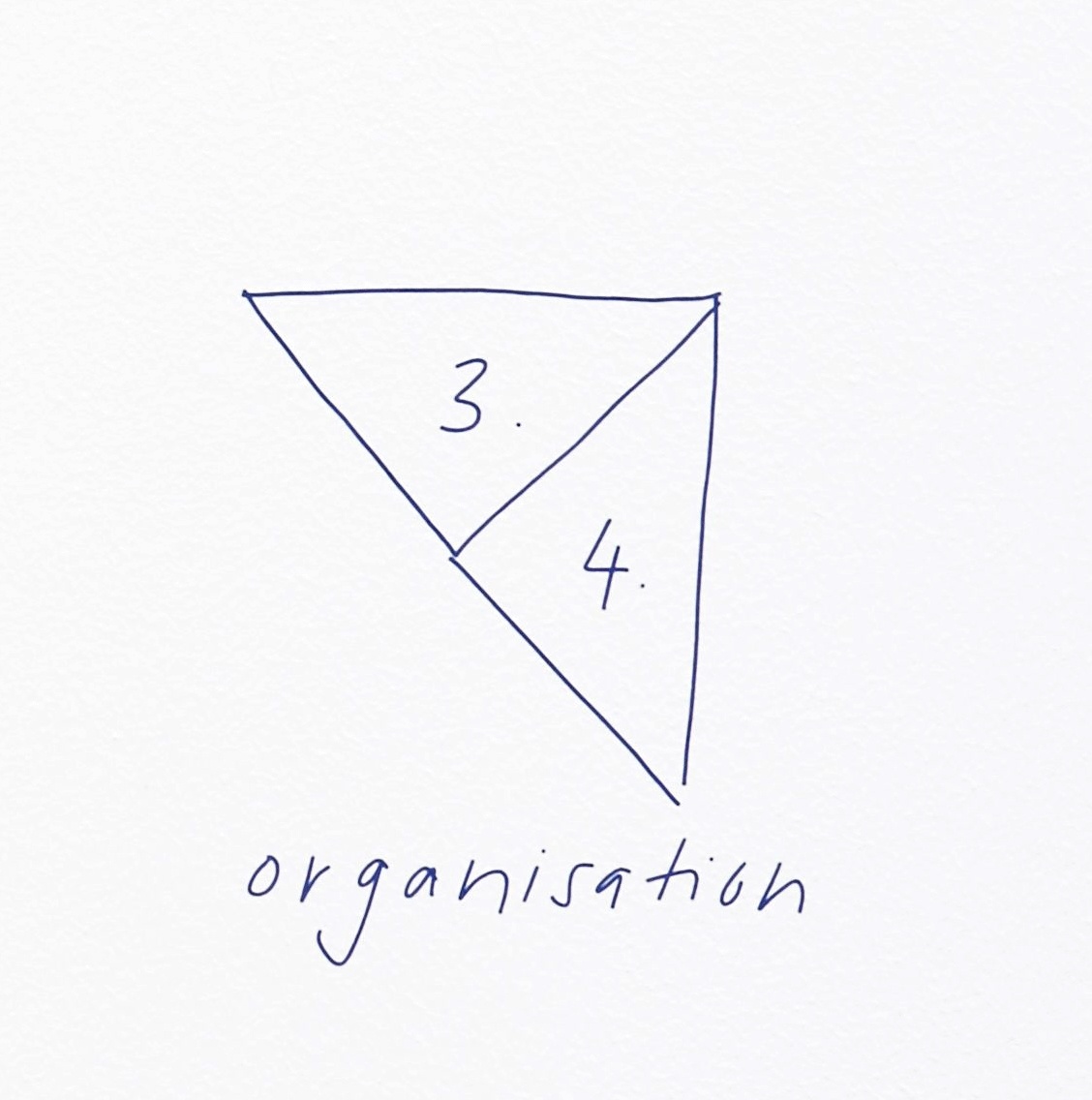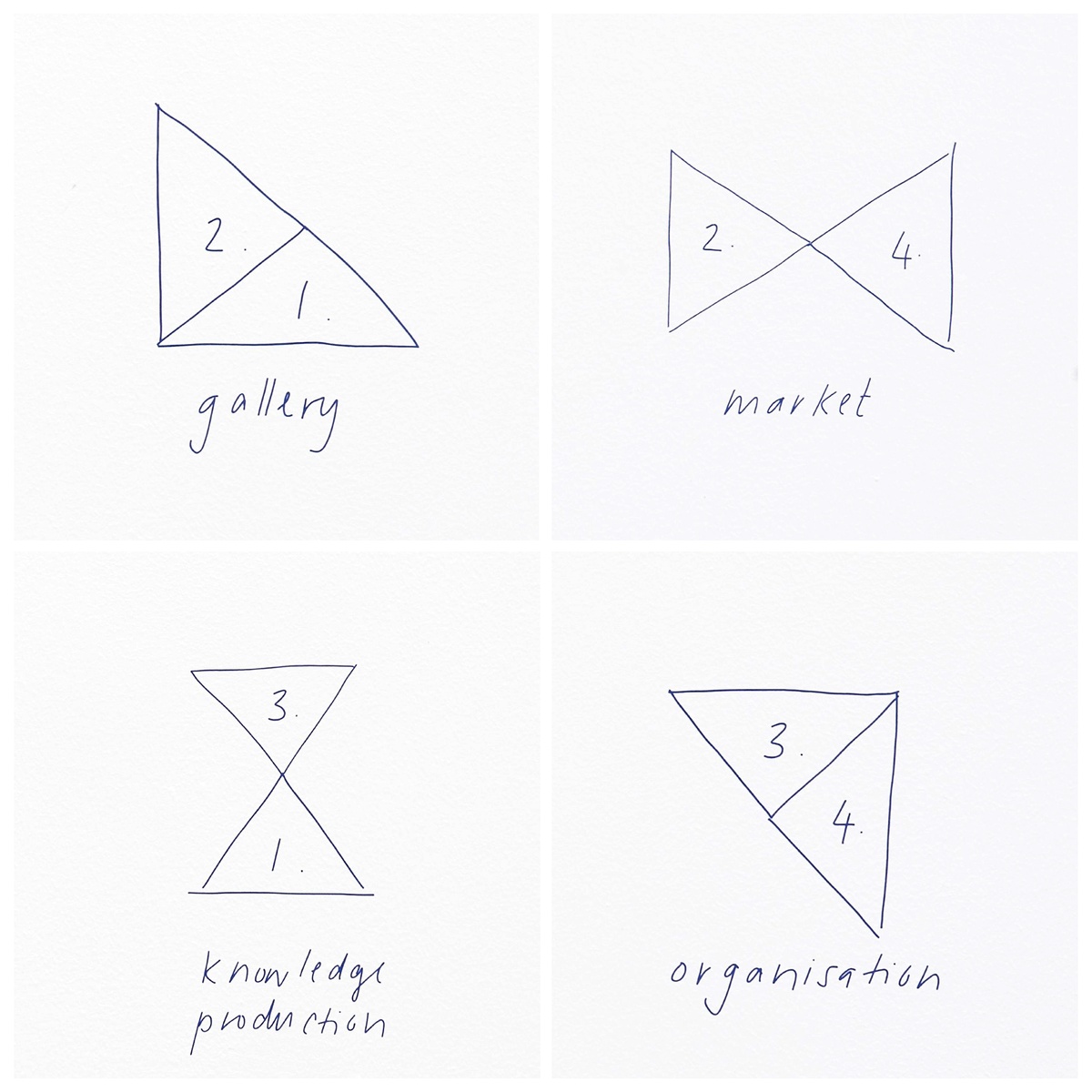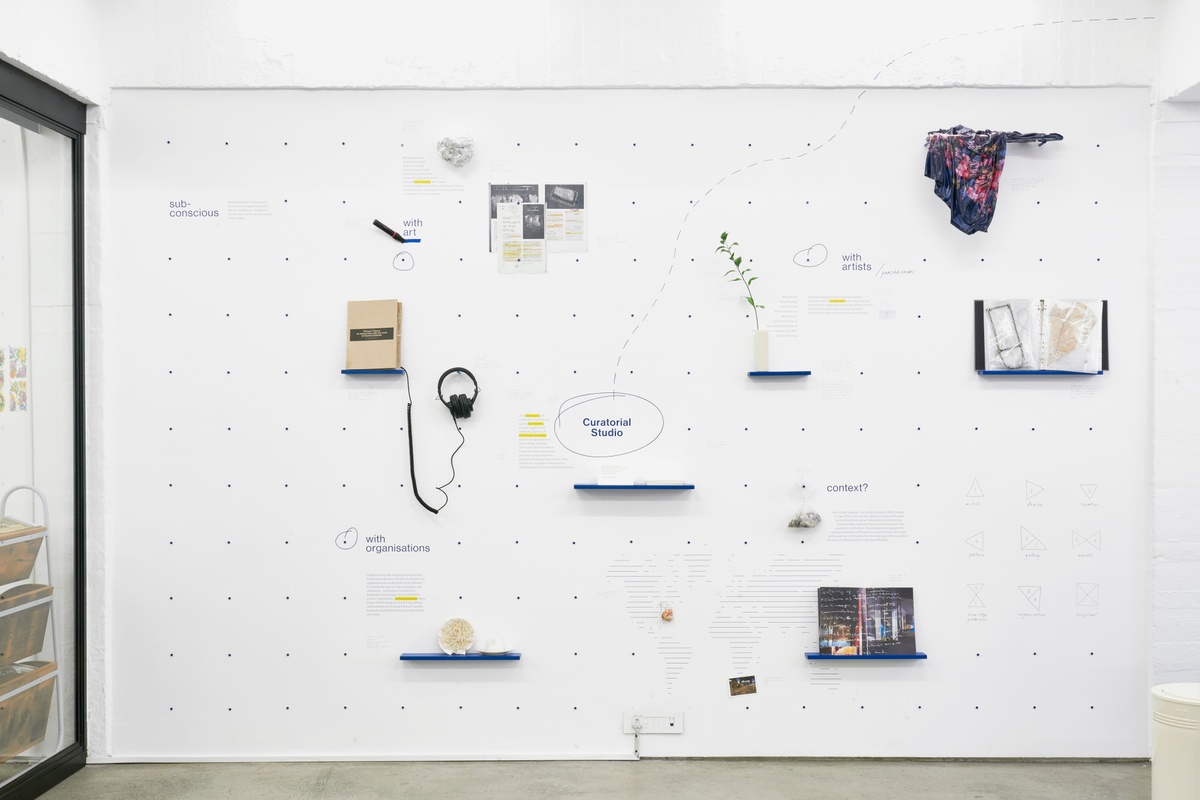Participants:
Amina Lawal Agoro
Essé Dabla-Attikpo
Amarie Gipson
Bethuel Githegi
Misha Krynauw
Khanyisile Mawhayi
Nkhensani Mkhari
Lou Mo
Nkgopoleng Moloi
Frida Robles Ponce
Julie Reiter
Petra Swais
Contributors:
Igshaan Adams
Kevin Beasley
francis burger
Zipho Dayile
Nolan Dennis
Ziphozenkosi Dayile
Tandakazi Dhlakama
Wendy Fisher
Hendrik Folkerts
Melissa Goba
Thembinkosi Goniwe
Ashraf Jamal
Bonolo Kavula
Pulane Kingston
Jova Lynne
Portia Malatjie
Khanya Mashabela
Athi Patra-Ruga
Mitchell Gilbert Messina
HacerNoche
Sean O’Toole
Bhavisha Panchia
Jo Ractcliffe
Daniel Rautenbach
Robin Rhode
Alexandra Ross
Penny Siopis
Herman Steyn
Emile Stipp
Sumayya Vally
Piet Viljoen
Mfundi Vundla
Valentine Umansky
Participating collections:
Tshabalala Kingston Collection
Emile Stipp Collection
Vundla Collection
Scheryn Collection
Convenors:
dr heeten bhagat
Josh Ginsburg
Kathryn Smith
Curatorial advisors:
Josh Ginsburg
Melissa Goba
Kathryn Smith
Producer (A4):
Sara De Beer
Producer (for patrons/ collectors):
Brett Scott
Portal design:
Ben Johnson
Librarians/ resource compilation:
Lucienne Bestall
Margot Dower
The Curatorial Connective (CX) was developed in response to the question:
How do we grow the critical middle between commerce and the academy?
Envisioned as a capacity and network-building programme for emerging curators on the continent, or for those working with a focus on the Global South, the first CX took place online.
Following an application inviting an ‘expanded definition of the curatorial’, twelve curators were chosen by an appointed selection committee to participate in a programme consisting of bi-weekly intensive online seminars. The CX sought to create opportunities for ‘access’, negotiated here as a significant obstacle to curatorial work in the region. Over thirty cultural practitioners working across the arts ecology shared their projects, processes and practices with the cohort through conversations and exchanges that took place over nine weeks.
Including ‘collection as practice’, the CX sought to build relationships between the participating curators and private collectors. The Scheryn Collection, Wendy Fisher, Pulane Kingston, Emile Stipp and Mfundi Vundla, each offered their support to the initiative. Engaging with the curators in online exchanges, the participating collectors selected works from within their private collections to share to an online Portal created for the programme. As a resource hub, the Portal became a central node within the CX; part library, part interactive environment where artworks that do not necessarily enjoy the opportunity to be researched and engaged with as those held in public collections might, could be shared and shown, albeit digitally.
The twelve curators were asked to enter the programme with a research question that could be developed throughout the programme. Iterations and wholesale shifts in research focus occurred throughout the process, with a research project shared at an online Symposium held to celebrate the close of the CX. Works from the Portal were shared and shown alongside works from the curators’ own regions, spaces, and places of interest, invigorating the works of South African artists through new and unexpected pairings and combinations.
Ambient online ‘Kitchen’ sessions stood in for the more incidental, unscheduled encounters (passing a colleague in a shared studio on the way to make a cup of tea) that can be missed in the online environment.
The CX facilitated interactions with curators, artists, collectors, and arts workers to establish sites of intersection, build relationships, and create networks of exchange en route to exhibition making.
–
CX key aims:
Provide emerging curators with access, information, and the opportunity to form partnerships within the arts ecology of South Africa.
In turn, collectors/ art patrons have the occasion to discuss works held within collections and explore their individual collecting methodology and practice.
Facilitate conversation and knowledge exchange about artworks held in personal custodianship to enable curators and collectors to share these works with publics.
Establish an alumni network of curators from the African continent and beyond. Through this, we hope to create dialogue and connections between South African-based curators, curators on the continent and international curators.
A list of recommended readings for each session is included in the session descriptions below.
Kathryn Smith & Josh Ginsburg
Recommended Reading
Elena Filipovic. 2017. ‘Introduction (When Exhibitions Become Form: On the History of the Artist as Curator)’. In The Artist As Curator: An Anthology. E. Filipovic (Ed). Mousse Publishing: Basel. 7-14.
Enwezor, Okwui & O'Neill, Paul. 2007. ‘Curating Beyond the Canon’. In Curating Subjects. P. O'Neill (Ed). Open Editions: London. 109-122.
Raqs Media Collective. 2010. ‘On Curatorial Responsibilities’. In The Biennial Reader. E Filipovic, M van Hal and S Ostevo (Eds). Bergen Kunsthall and Hatje Cantz: Bergen and Ostfildern. 276-289.
Richter, Dorothee & Drabble, Barnaby. 2015. ‘Editorial’. In Curating Degree Zero Archive: Curatorial Research. Available online.
Ashraf Jamal
Recommended Reading
Elena Filipovic. 2017. ‘David Hammons: Untitled (Knobkerry)’. In The Artist As Curator: An Anthology. E Filipovic (Ed). Mousse Publishing: Basel. 261-281.
McClusky, Pamela. 2007. ‘The Unconscious Museum: Collecting Contemporary African Art Without Knowing It’. In Collecting the New. B Altschuler (Ed). Princeton University Press: Princeton. 115-129.
Perec, Georges. 1978. Brief Notes on the Art and Manner of Arranging One’s Books. Available online.
Woolley, Dawn. 2020. ‘Shoplifting from Woolworths and Other Acts of Material Disobedience’, an exhibition of work by Paula Chambers. Available online.
Alexandra Ross & Daniel Rautenbach
Recommended Reading
Connor, Michael. 2020. Curating Online Exhibitions, Part 1: Performance, variability, objecthood. Available online.
J Bernardi & N Dimmock. ‘Creative Curating: The digital archive as argument’. In Making Things and Drawing Boundaries. Sayers, Jentery (Ed). University of Minnesota Press: Minneapolis. 87-197.
Richter, Dorothee. 2020. Curating the Digital – A Historical Perspective. Available online.
Wallerstein, Wade. 2019. Circumnavigating the White Cube: Digital Curatorial Practices in Contemporary Media Landscapes. Available online.
Hendrik Folkerts & Igshaan Adams
Recommended Reading
Bennett, Jane. 2016. ‘Vibrant Matter’. CSPA Quarterly. Vol. 14: 7-11.
C Condorelli & JF Hartle. 2013. ‘Too close to see: Notes on friendship, a conversation with Johan Frederik Hartle’. In Self-Organised. S Herbert & AS Karlsen (Eds). 62-73.
Fox, Dan. 2013. Being Curated. Available online.
Schuppert, Mirjami. 2021. Learning to Say No, the Ethics of Artist-Curator Relationships. Available online.
Athi-Patra Ruga & Khanya Mashabela
Recommended Reading
J Doubtfire & G Ranchetti. 2015. Curator as Artist as Curator. Available online.
Malcolmess, Bettina. 2019. ‘don’t get it twisted: queer performativity and the emptying out of gesture’. In Acts of Transgression. J Pather & C Boulle (Eds). Wits University Press: Johannesburg. 193-218.
Mashabela, Khanya. 2017. Zeitz MOCAA: Who is Your Audience?. Available online.
State of the Art. 2016. State of the Art ft. Athi-Patra Ruga, Nandipha Mntambo and Zanele Muholi. Video clip. Available online.
Nolan Oswald Dennis & francis burger
Recommended Reading
Arkette, Sophie. 2009. Poor. Old. Tired. Horse. Available online.
BubblegumConnects. 2021. Sumayya Vally in conversation with Nolan Dennis Oswald. Video clip. Available online.
Glissant, Édouard. 2004. ‘For Opacity’. In Over Here: International Perspectives on Art and Culture. G Mosquera & J Fisher (Eds). MIT Press: Cambridge. 252-257.
Greiner, Malakai. 2019. Voids of Understanding: Opacity, Black Life, and Abstraction in What Remains. Available online.
Meet the Artist. 2016. Nolan O Dennis. Video clip. Available online.
Syntalk. 2014. The Ways Of Knowing. Podcast. Available online.
Vvork. 2016. Search: Language. Web page. Available online.
Zipho Dayile & Tandazani Dhlakama
Recommended Reading
African Centre for Cities. 2019. Beyond our borders: Independent art spaces as a lens on city futures. Podcast. Available online.
De La Puente, Gabriella. 2019. The Problem with Tiny Galleries. Available online.
H Gregory & K Robertson. 2018. ‘No small matter: Micromuseums as critical institutions’. RACAR: Canadian Art Review. Vol. 43(2): 89-101.
Lind, Maria 2013. ‘Why mediate art?’ In Ten Fundamental Questions of Curating. J Hoffmann (Ed). Mousse and Contrappunto: Milan. 99-126.
M Mohren & B Herbordt. 2017. ‘Performing Institutions: A catalogue of performative practices’. In Performing the Digital: Performance Studies and Performances in Digital Culture). M Leeker, I Schipper & T Beyes (Eds). Transcript Verlag: Bielefeld. 213-225.
Smith, Kathryn. 2011. ‘The Experimental Turns in the Visual Arts’. In Visual Century: South African Art in Context, Volume Four. T Goniwe, M Pissarra & M Majavu (Eds). Wits University Press: Johannesburg. 118-151.
Robin Rhode
Recommended Reading
G Filinta & S Hardy. 2019. “Who No Know, Go Know”: How to Shift Knowledge about/of Africa. Interview with Stacy Hardy – Chimurenga Magazine. Available online.
Koloane, David. 2003. ‘South African Art in the Global Context’. Présence Africaine. Vol. 167: 119-126.
McGee, Julie. 2007. ‘Primitivism on trial: The “Picasso in Africa” exhibition in South Africa’. RES: Anthropology and Aesthetics. Vol. 52: 161-167.
Murg, Stephanie. 2015. Powerful statements, modest means: Robin Rhode’s ’Borne Frieze’. Available online.
Rhode, Robin. 2020. Multidisciplinary artist Robin Rhode brings his drawing process to life. Video clip. Available online.
Portia Malatjie
Recommended Reading
De Wachter, Ellen Mara. 2017. ‘The Future: What the World Can Learn from Co-Art’. In Co-Art: Artists on Creative Collaboration. EM De Wachter (Ed). Phaidon: London. 222-227.
Edjabe, Ntone. 2016. Why you don’t see people collaborating on building hospitals and 4 other thoughts on collaboration. Available online.
E Krivanek & G Ngcobo. 2019. Interview with Gabi Ngcobo. Available online.
Ram, Rosie. 2015. The curatorial and the collective. Available online.
Sumayya Vally & Sean O’Toole
Recommended Reading
Bastos, Flavia MC. 2006. ‘"Tupy or Not Tupy?“ Examining Hybridity in Contemporary Brazilian Art’. Studies in Art Education. Vol. 47(2): 102-117.
Smith, Kathryn. 2004. ‘Keeping it Real’. In Over Here: International Perspectives on Art and Culture. G Mosquera & J Fisher (Eds). MIT Press: Cambridge. 278-285.
Syntalk. 2015. The Firstness of Ideas. Podcast. Available online: Syntalk. 2017. Norms and Conventions. Podcast. Available online.
Syntalk. 2017. The Shapes and Forms. Podcast. Available online.
Syntalk. 2017. Norms and Conventions. Podcast. Available online.
WochenKlausur. 2015. Let’s Talk About Another Concept. Available online.
Jo Ractliffe & Hacer Noche
Recommended Reading
Enwezor, Okwui. 2008. Exodus of the Dogs. In Terreno Ocupado. J Ractliffe. Warren Siebrits: Johannesburg. 84-89.
Gioni, Massimiliano. 2020. Songs of Mourning, Songs of Resistance. In Grief and Grievance: Art and Mourning in America. Phaidon: London. 186-191.
Mail&Guardian. 2018. Mexico with its take on the dead. Available online.
Miller, Philip. 2018. Hacer Noche / Crossing Night. Video clip. Available online.
Ractliffe, Jo. 2010. As Terras do Fim do Mundo. Stevenson: Cape Town.
Penny Siopis with Herman Steyn & Piet Viljoen
Recommended Reading
G Olivier & P Siopis. 2014. ‘Conversation III: Installation and Collection’. In Penny Siopis: Time and Again. G Olivier (Ed). Wits University Press: Johannesburg. 108-125.
Law, Jennifer. 2014. ‘Commentary III: The Artist’s Will’. In Penny Siopis: Time and Again. G Olivier (Ed). Wits University Press: Johannesburg. 126-137.
Reilly, Maura. 2018. ‘Mining the Museum curated by Fred Wilson’. In Curatorial Activism: Towards an Ethics of Curating. M Reilly (Ed). Thames and Hudson: London. 118-123.
Sjöholm, Jenny. 2014. ‘The art studio as archive: tracing the geography of artistic potentiality, progress and production’. Cultural Geographies. Vol. 21(3): 505:514.
Valentine Umansky & Emile Stipp
Recommended Reading
C Chris & J Simon. 2015. ‘Surveying Videoscapes: The Politics of Distribution in Tiered Visual Economies’. Art Journal. Vol. 74(4): 5-20.
Corrigall, Mary. 2018. From a collector’s perspective. Available online.
E Jordan & V Umansky. 2019. Valentine Umansky: The LagosPhoto Festival Curator Pushes for Accessibility and Representation. Available online.
Frohne, Ursula Anna. 2013. ‘Art In-Formation: American Art under the Impact of New Media Culture’. American Art. Vol. 27(2): 38-43.
Meyer, James. 1966. ‘Marcel Bochner: Working Drawings and Other Visible Things On Paper Not Necessarily Meant to be Viewed as Art’. In The Artist As Curator: An Anthology. E Filipovic (Ed). Mousse Publishing: Basel. 35-50.
Pulane Kingston & Melissa Goba
Recommended Reading
Adam, Georgina. 2021. Pulane Kingston on collecting black African female artists. Available online.
KM Moist and D Banash. 2013. ‘Introduction’. In Contemporary Collecting: Objects, Practices, and the Fate of Things. KM Moist and D Banash (Eds). Scarecrow Press: Langham. Ix-xiii.
Kouoh, Koyo. 2017. Defining a Canon: On the Pigozzi Collection. In The Insiders: Selected Works (1989-2009) from the Contemporary African Art Collection of Jean Pigozzi. G Robinne (Ed). Éditions Dilecta: Paris. 244-247.
R Cardinal and J Elsner. 1994. ‘Introduction’. In The Cultures of Collecting. R Cardinal and J Elsner (Eds). Reaktion Books: London. 1-6.
Rogan, Bjarne. 1998. ‘On Collecting as Play, Creativity and Aesthetic Practice’. Etnofoor. Vol. 11(1):40-54.
Mfundi Vundla & Thembinkosi Goniwe
Recommended Reading
Breitz, Candice. 2011. Extra. Available online.
Goniwe, Thembinkosi. 2018. The sour pleasure of the art industry. Available online.
KM Moist and D Banash. 2013. ‘Introduction’. In Contemporary Collecting: Objects, Practices, and the Fate of Things. KM Moist and D Banash (Eds). Scarecrow Press: Langham. Ix-xiii.
Kouoh, Koyo. 2017. Defining a Canon: On the Pigozzi Collection. In The Insiders: Selected Works (1989-2009) from the Contemporary African Art Collection of Jean Pigozzi. G Robinne (Ed). Éditions Dilecta: Paris. 244-247.
R Cardinal and J Elsner. 1994. ‘Introduction’. In The Cultures of Collecting. R Cardinal and J Elsner (Eds). Reaktion Books: London. 1-6.
Rogan, Bjarne. 1998. ‘On Collecting as Play, Creativity and Aesthetic Practice’. Etnofoor. Vol. 11(1):40-54.
Jove Lynne
Recommended Reading
Gurney, Kim. 2015. ‘Curating the Ephemeral City’. In The Art of Public Space: Curating and Re-Imagining the Ephemeral City. K Gurney. Palgrave McMillan: Cape Town. 17-40.
Cichocki, Sebastian. 2008. ‘I didn’t promise you it would be nice. An institution in a dying city’. In The Mousetrap Book: On Dealing with Art Institutions in Contemporary Curatorial Practice. A Szyłak & A Szczerski (Eds). Wyspa Institute of Art / Wyspa Progress Foundation: Gdansk. 39-44.
L Ossei-Mensah, J Lynne & J Ginsburg. 2019. Crossing Night: Regional Identities x Global Context. Exhibition. Available online.
Sitas, Rike. 2012. ‘Becoming Otherwise’. In 2010 Reasons to Live in a Small Town. J GayLard (Ed). Vansa: Cape Town. 45-51.
Bhavisha Panchia & Kevin Beasley
Recommended Reading
Art21. 2019. Kevin Beasley’s Raw Materials. Video clip. Available online.
Bestall, Lucienne. 2020. What Remains: Kevin Beasley’s ‘without a clear discernible image’. Available online.
B Panchia & LM Tawil. 2020. Noise and Nation. Available online.
Panchia, Bhavisha. 2020. Imagine you are in a museum: What do you hear? Audio. Available online.
Mitchell Gilbert Messina & Bonolo Kavula
Recommended Reading
Syntalk. 2015. The Having of Fun. Podcast. Available online.
Z Cahill & P von Zwek. 2014. ‘The artist as double agent’. Afterall: A Journal of Art, Context and Enquiry. Vol. 36: 64-73.
Supporting and extending the Connective’s virtual sessions, the purpose-built Portal offered a hybrid resource environment with selected works shared by participating collectors, a library of recommended readings, a detailed programme with introductions to each contributor, and a collaborative, real-time document for note-taking and -sharing.
Made after the online programme concluded, the Curatorial Connective Workbook draws together summaries and insights from the weekly sessions and the participating curators’ presentations. Sent via post to each curator – from cities in the USA to Taipei, Nairobi and Dakar, among others – the Workbook offers a physical record of the Connective’s digital engagements.
